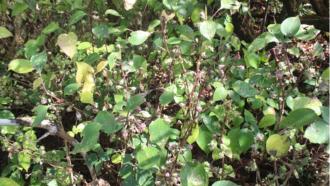
The Earth's crust contains copious amounts of primordial radioactive substances as a result of geological activities from the dawn of its time. Formed from the interstellar medium that gave rise to the solar system, these unstable elements are unequally distributed across the globe. Due to geological phenomena like weathering of rocks, radioactive substances like thorium-232, potassium-40, and uranium-238 surface from the crust and end up in the soil.
Taking millions of years to diminish to half their original quantity, these radioactive substances release energy in the form of weak gamma rays. While exposure to such weak radiation is typically considered harmless, their effects on humans and the environment, in general, are not well understood. Hence, there's a growing interest to understand the effects of low-level exposure to radioactivity. In a recent study, researchers from Sai Nath University, Ranchi, and Bharathiar University, Coimbatore, set out to quantify the impacts of natural radioactivity on the surrounding environment in the Nilgiris of Tamil Nadu. Their findings have been published in the Journal of Radiation Research and Applied Sciences.
The weathering of rocks in the Western Ghats of southern India, along the coast of Kerala and parts of Tamil Nadu, has yielded monazite soil. Monazite soil is a dense rare-earth mineral often mined for cerium, which is used to polish optical surfaces, and for radioactive thorium, which is used to make telescope lenses. West-flowing rivers, like the Periyar and Pamba, deposit this soil in the jagged coastlines across Kerala, where human settlements are widespread. The natural radioactivity from these deposits releases the most potent dose of radiation, which is further intensified artificially by the fertilisers farmers use for farming.
The researchers of this study collected soil samples from around the Nilgiris and measured the intensity of gamma radiation from the samples. They then determined if this radiation released due to radioactivity in the soil is within the safety limits for long term exposure.
The radioactivity of different radionuclides — an atom with excess nuclear energy — is expressed relative to the radioactivity of radium. The researchers obtained the radium equivalent values for Thorium-232, Potassium-40, and Uranium-238 to determine the safety of the soil samples. These values are crucial to establish a baseline measurement of radioactivity to carry out further studies in the area, they say.
The researchers used a standard dosimeter — a device that measures the external radiation — to calculate the dose rate — the amount of radiation per unit time outdoors — at 25 different locations around the Nilgiris to ascertain the radiation in the air. Surprisingly, the average terrestrial dose rate over the sampled areas turned out to be almost two times the world average, with thorium alone contributing to over 70% of the radiation.
Although the mean radium-equivalent dose rate in the study area was well below the safety limits, the observed average rise in dose rate over the global average, the researchers speculate, is contributed by cosmogenic nuclides, which are formed when cosmic rays bombard the stable nuclides in the atmosphere. Since the Western Ghats is 2400 metres above sea level, the region is much more prone to cosmic rays than other low-level areas. Unlike in other areas, these atmospheric radionuclides play a significant role in defining the radioactivity of this region, say the researchers.
Further, the researchers also measured the exposure rates in humans living in the Western Ghats to quantify the risks involved due to long-term exposure to such radiations. Their calculations followed the standards set by the United Nations Scientific Committee on the Effects of Atomic Radiation. The results revealed that the risk of cancer is negligible since the value is well below the permissible limit. Although the average hazard indices, like the cancer risk index, are higher than in other parts of the world, the radioactivity in the region is not of serious concern. At the moment, they seem to have no profound effect on humans living in these parts, say the researchers.






